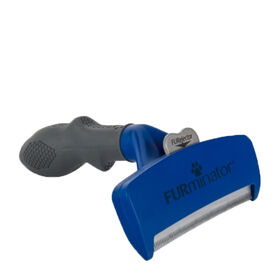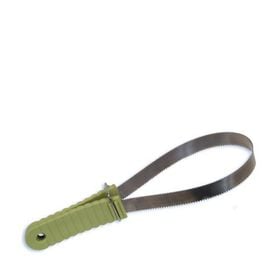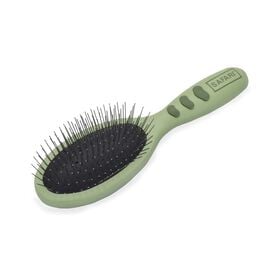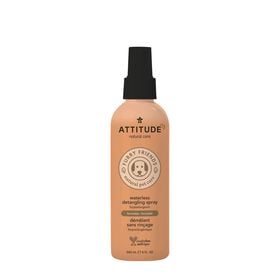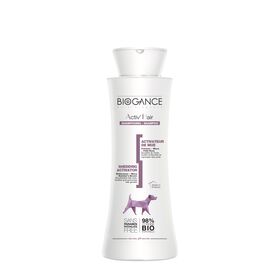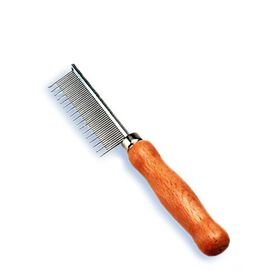Do you adore your hairy dog, but find that having all that hair fall out is really inconvenient? Do you no longer know what to do about it? Learn a little about double-coated dogs and their shedding cycle, and especially about how to control shedding through proper grooming.
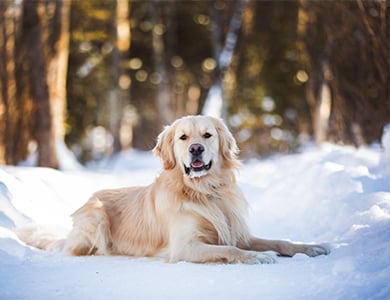
Which breeds have double coats?
Double-coated breeds have two layers of hair: the PRIMARY hairs (or topcoat) and the SECONDARY hairs, also known as the UNDERCOAT. The primary hairs cover the undercoat. They are colourful, shiny, have a larger fibre diameter than the undercoat and are waterproof. They protect the dog from the sun, heat strok, bad weather and insects. The undercoat is pale, fine, woolly, and porous. It supports the topcoat and plays a key role in regulating body temperature.
There are many different types of dog coats and they don’t all shed the same way. In general, animals with an abundant, dense undercoat shed massively. That’s the case for Nordic-type dogs, such as Siberian huskies or Bernese mountain dogs. On the contrary, some breeds, such as bichons, poodles, Yorkshire terriers and shih tzus, have practically no undercoat, and barely shed at all. These dogs are ideal for people with allergies.
What is shedding?
Shedding is a cyclical phenomenon based on natural light. It’s a way for follicles to get rid of the old hair and make room for new hair growth.
As the days get shorter, a dog sheds in order to grow a longer, denser coat that will protect it during the colder months. As the days get longer, a dog sheds again, making way for a shorter, lighter coat in anticipation of the hot summer months.
There are two annual shedding periods. Usually, the fall shed is less severe than the spring one because the coat is lighter and shorter than the one from the spring period.
A healthy fur with a balanced undercoat to topcoat ratio plays a crucial role in regulating a dog’s temperature.
- During the warm season, a dry, airy coat that is free of knots traps the cool air around it, insulating the dog from the heat and keeping it cool.
- During the cold season, a dry, airy coat that is free of knots traps the warm air around it, insulating the dog from the cold and allowing it to conserve heat.
Note that severe hair loss can be the result of an external parasite, a hormonal problem or stress. Dogs that experience this type of hair loss would benefit from a veterinary consultation.
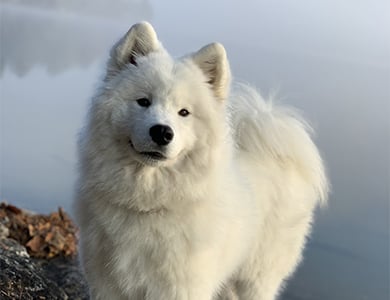
Recommended grooming for double-coated dogs
To keep undercoat hair from accumulating in every nook and cranny of the house, recommended grooming involves carding, commonly known as SHEDDING REDUCTION, which involves the removal of undercoat using a brush, comb, or carding rake. The process frees the follicles of excess undercoat, stimulating the regrowth of a healthy, shiny, and intensely colourful topcoat. You can also integrate this routine in a positive way a few times a week by offering your dog healthy treats, hugs, words of encouragement, or any reinforcement that will help your pet associate the activity with a positive emotion.
In addition to eliminating part of the dead hair, this process promotes good blood circulation and helps aerate the coat, which maximizes its insulation against cold and heat. Various skin problems can arise if a dog has an overabundance of undercoat, and its skin has trouble breathing.
Dogs that are fed a diet of natural foods (raw meat and natural supplements) or high-quality dry food have an undercoat layer that is better balanced in terms of composition. Dogs that are given lower quality food can have excessive undercoat.
In some cases, additional grooming may be necessary to eliminate excessive undercoat. This is where the expertise of a professional groomer who is qualified in shedding reduction comes into play.
Can double-coated dogs be shaved?
People living with double-coated dogs quickly realize that shedding can become a problem at home if it’s not controlled, and shaving is sometimes the first option that comes to mind. In addition, during the hot summer months, they may think they’re doing a good thing by having their pet shaved, believing that they’re providing relief from the heat. For some, it may be the perfect solution, but it may have the opposite effect for others. Which are the breeds that can be shaved and those for which the procedure can be harmful? The latest findings on the subject focus on two types of double-coated breeds, one for which shaving is strongly discouraged.
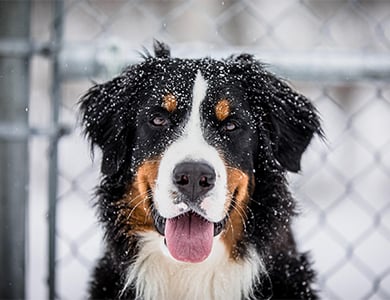
Double-coated breeds that CANNOT be shaved
Nordic breeds cannot be shaved under any circumstances. They have a thick, dense coat, and the hair on their head is short. This category includes the following breeds (non-exhaustive list):
- Bernese mountain dog
- Siberian husky
- German shepherd
- Golden retriever
- Chow chow
- Shetland sheepdog
- Australian shepherd
- Labrador retriever
- Samoyed
- Pomeranian
The harmful effects of shaving on this type of coat
But why does my groomer refuse to shave my Bernese mountain dog? First, it’s important to know that natural loss of undercoat occurs only once it goes through a full coat cycle. During shaving, undercoat hair can get trapped in the follicles, possibly blocking them. As a result, the dog might lick itself and cause irritation or hot spots. Shaving double-coated dogs in this category can damage the condition of the topcoat, which is replaced in part by undercoat that grows much more quickly. Shaving will ultimately result in a coat made up of an increasingly thick, matted, and pale-coloured undercoat. During the warm season, when aeration through the congested undercoat is no longer adequate, the dog’s body heat is unable to escape optimally. This results in an increase in the animal’s body temperature, one of the most harmful effects.
In addition, since the topcoat grows more slowly, uneven growth that can go as far as post-clipping alopecia (lack of hair regrowth after close clipping) can occur. Also, given the porous quality of the undercoat, dermatological issues such as skin fungus or itching can also occur if the coat is not thoroughly dried after bathing.
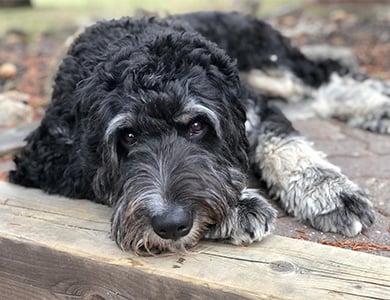
Double-coated breeds that CAN be shaved
The category of double-coated dogs that CAN BE SHAVED includes dogs with a less dense coat, but with a hairy head, with or without a beard. These dogs can be shaved, but the coat must be carded afterward. The following are a few examples:
- Schnauzer
- American cocker spaniel
- Bouvier des Flandres
- Wire fox terrier
- West Highland white terrier
- Welsh terrier
- Scottish terrier
Don’t hesitate to ask a professional groomer’s advice about the best tools for your dog’s coat type. A dog whose coat is well groomed will feel better and be happier!


